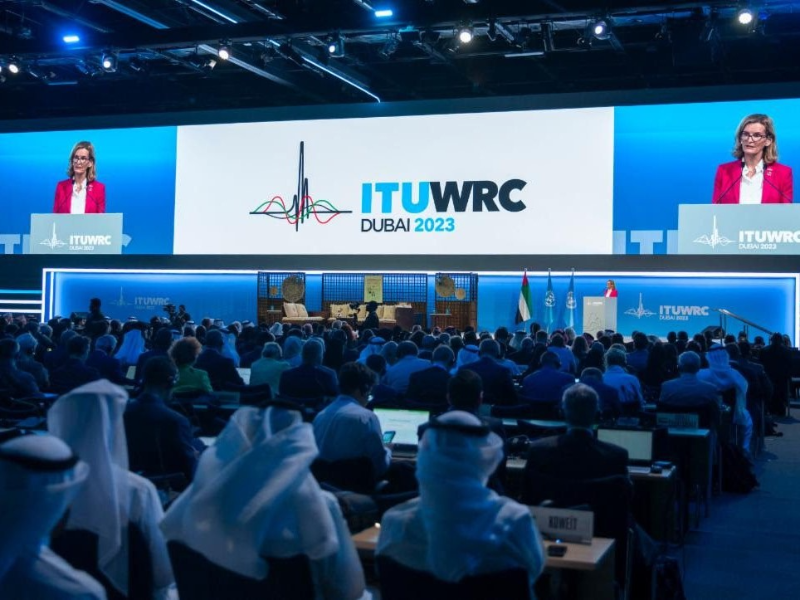- WRC-23’s outcomes are favorable in CIS countries, particularly the identification of the 6425-7125 MHz frequency bands for IMT.
- CIS countries are optimistic about the examination of proposals for WRC-31, including the development of a regulatory procedure requiring explicit agreement by countries to be included in the coverage area of a non-geostationary network.
OUR TAKE
The successful World Radiocommunication Conference 2023 (WRC-23) in Dubai, United Arab Emirates, provided an international platform for countries to come together to discuss and address these issues. Sergey Pastuk, as Chairman of the Radiocommunication Conference 2023 and the WRC Regional Working Groups, has insights into the active participation of the CIS region at WRC-23 and the results achieved. In this paper, we will review in detail the CIS region’s performance at the Congress through his lens, and explore how these results will impact the future of the region in terms of 5G network development, scientific service advancements, and non-geostationary satellite network management. At the same time, we will also look ahead to the upcoming WRC-31 and analyse the recommendations and expectations of the CIS region for the global radiocommunication regulatory process.
–Elodie Qian, BTW reporter
What happened
By Sergey Pastukh, Chair of the Regional Working Group on preparations for the 2023 World Radiocommunication Conference (WRC-23). He details the CIS region’s proactive approach to the intricate matters of radio spectrum and satellite orbit management.
Despite the COVID-19 pandemic’s challenges in preparing for WRC-23, the CIS region formulated unified proposals for each agenda, focusing on fostering innovation in radio technologies, promoting efficient spectrum and orbital resource utilisation, and mitigating unintentional interference for stable sector investment.
WRC-23’s outcomes are favorable in CIS countries, particularly the identification of the 6425-7125 MHz frequency bands for International Mobile Telecommunications (IMT), supporting 5G network development and paving the way for future IMT-2030 systems. This range offers a balance between coverage and bandwidth, addressing the spectrum shortage in some CIS countries due to restrictions on the 3300-3800 MHz band.
CIS nations also welcome the recognition of frequency bands for high-altitude platform stations as IMT base stations (HIBS) and regulatory provisions governing their operation, enhancing broadband services in rural and remote areas.
The conference’s adoption of safeguards against interference for earth stations in motion (ESIM) on aircraft and maritime vessels ensures the use of existing fixed-satellite service resources, providing uninterrupted connectivity in areas with underdeveloped terrestrial infrastructure.
Also read: Asia-Pacific gains from World Radiocommunication Conference
Also read: Optus uses Ericsson’s 5G interference sensing software
Why it’s important
The CIS region welcomes the decision to reserve the ‘television’ band (470-694 MHz) for terrestrial television until at least 2031, aligning with the strategy to benefit from investments in digital terrestrial broadcasting and re-evaluate the phasing out of terrestrial television broadcasting.
The CIS region prioritised the advancement of science services, with the proposal to upgrade the allocation status for the space research service in the 14.8-15.35 GHz frequency band receiving approval. This will better protect the service against interference, supporting modern scientific research programs.
Addressing the burgeoning non-geostationary satellite networks, the CIS region proposed measures to ensure equitable access and prevent the monopolisation of non-geostationary orbit and spectrum resources. The conference set tolerances for certain orbital characteristics, reflecting the need for a balance between efficient satellite orbit utilisation and flexibility in non-geostationary satellite system operations.
CIS countries are optimistic about the examination of proposals for WRC-31, including the development of a regulatory procedure requiring explicit agreement by countries to be included in the coverage area of a non-geostationary network. This procedure aims to prevent monopolisation and ensure equitable access to non-geostationary orbits and associated spectrum.
The Regional Commonwealth in the Field of Communications (RCC) underscores the significance of the WRC process for refining regulatory procedures and ensuring the availability of spectrum and orbital resources for new technologies. The recent conference underscored the necessity for rigorous technical examination and cooperation among regional organizations to achieve a global consensus.

